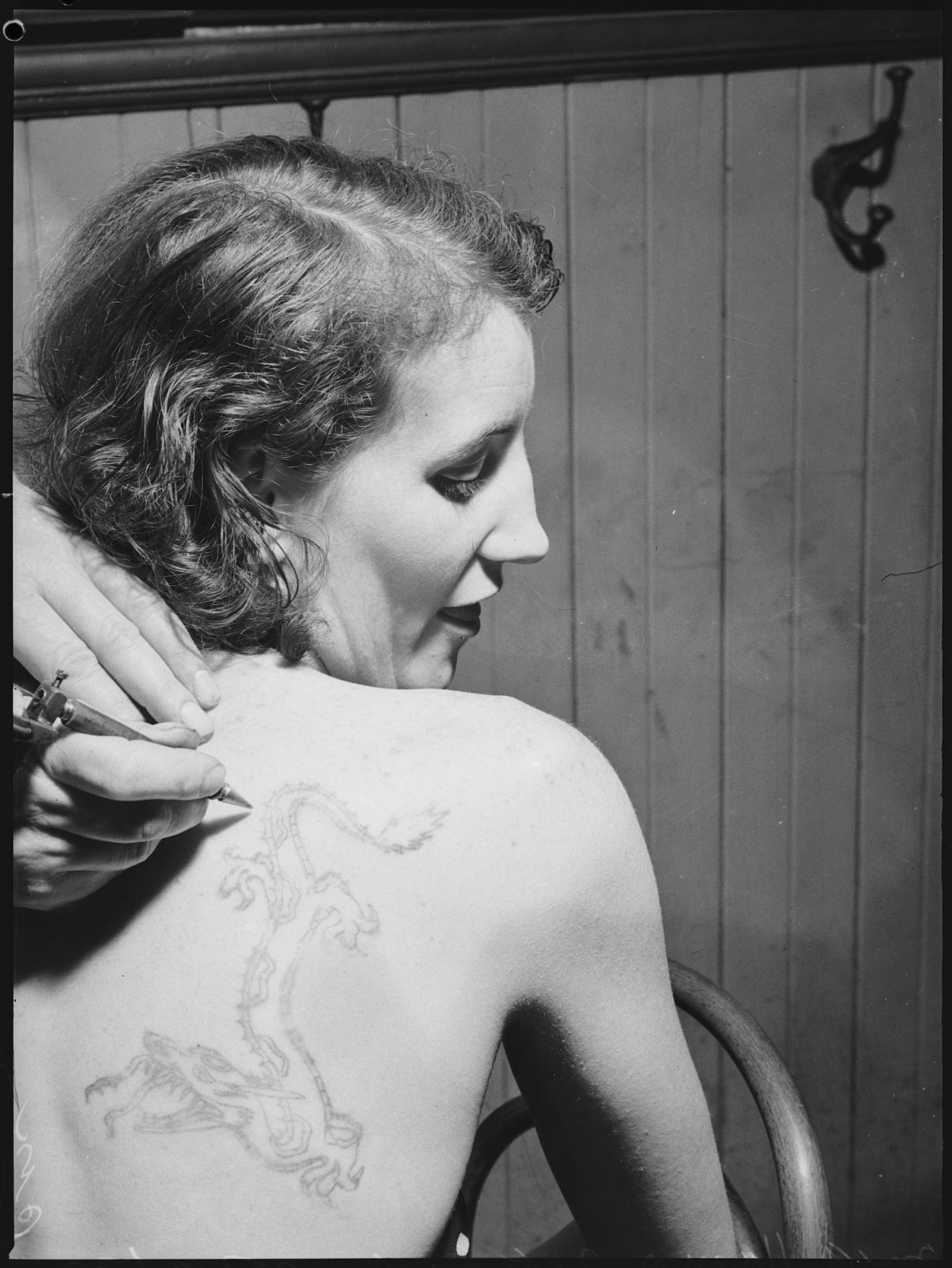
Woman with a dragon tattoo, Fred Harris Tattoo Studio, Sydney, 17 December 1937, photographer Ray Olson
In 1937 Fred Harris had a small shop in Sussex Street, Sydney. Sailors provided most of the canvases for Fred’s skin paintings but he also tattooed horses on jockeys, flowers on legs and women with beauty spots. Among the more popular tattoos were Australian flags and Kangaroos for sailors of the visiting American Fleet.
The first issue of the Australian PIX magazine covered the story with photographs by Ray Olsen. The State Library of New South Wales describes Pix magazine:
Pix played an important role in the post-war aspirations which shaped Australians and their sense of national identity, albeit in a playful, light-hearted manner. At the price of sixpence, the heavily illustrated magazine featured a uniquely Australian mix of scandal, sensationalism, human-interest stories, fashion, politics, culture and entertainment. Its boldly designed covers included a black and white photo, showcasing a Hollywood starlet, fresh-faced Aussie girl (often in a swimsuit) or quirky animal, shot along with attention-grabbing text .
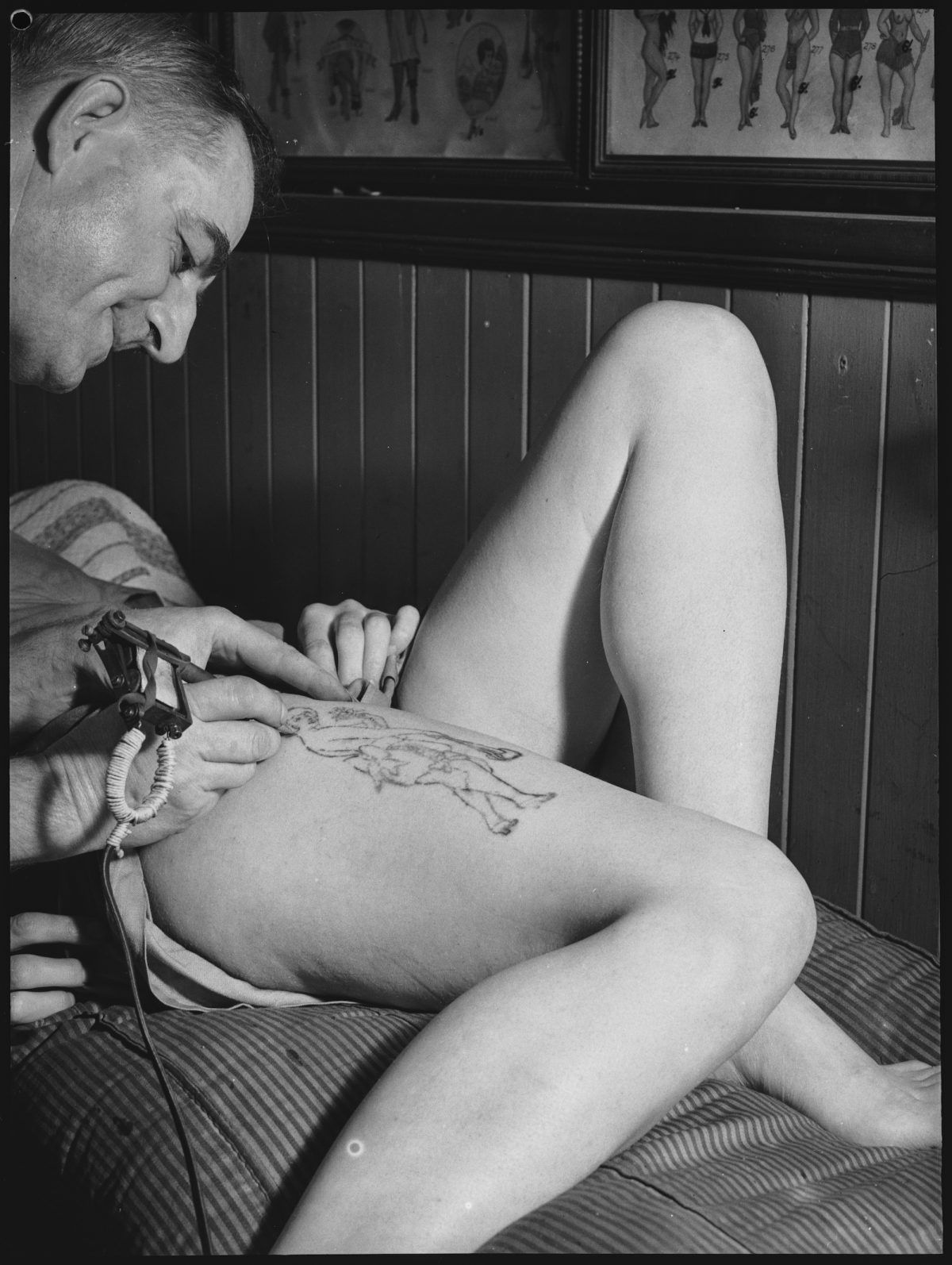
Woman having her leg tattooed, Fred Harris Tattoo Studio, Sydney, 20 December 1937, photographer Ray Olson
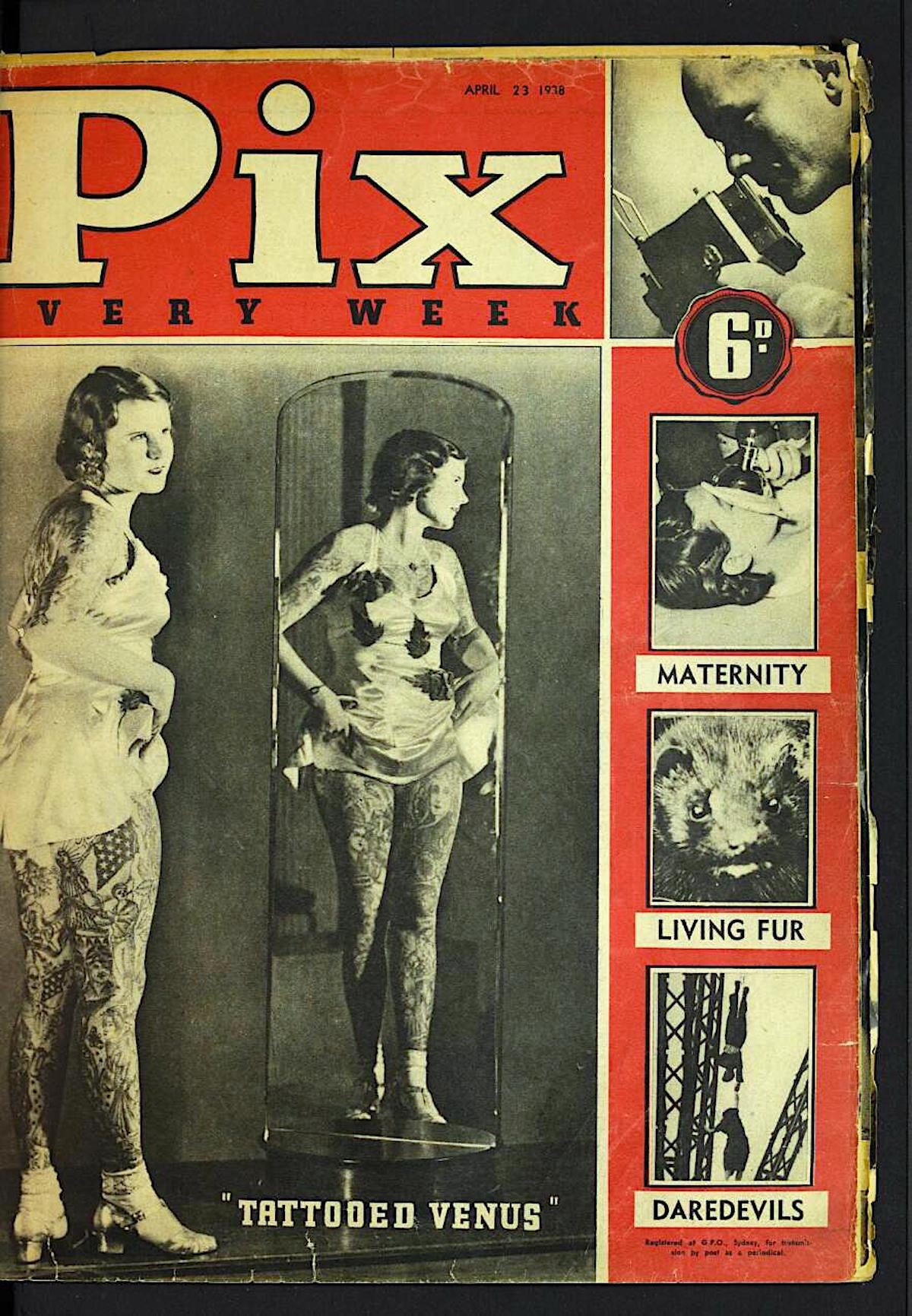

Fred Harris at his Tattoo Studio with instruments, Sydney, 20 December 1937, photographer Ray Olson
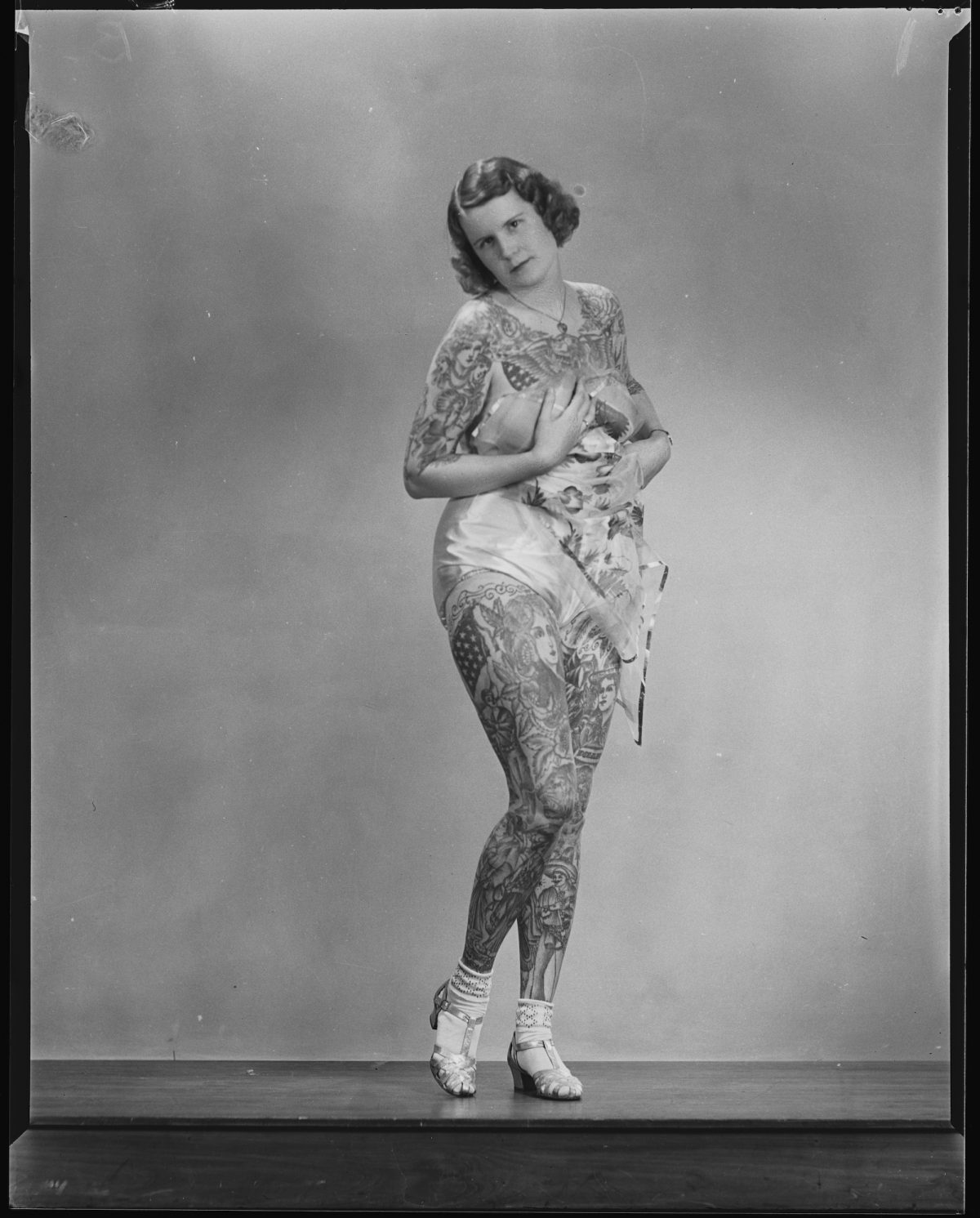
The American Betty Broadbent, the ‘Tattooed Venus’, Sydney, 4 April, 1938, photographer Ray Olsen.
Broadbent was said to have had 465 tattoos, including the largest known at that time, a madonna and child on her back. She was also decorated with images of pilot Charles Lindbergh, patriotic flags and emblems including the American eagle. Visiting Australia in early 1938 for the Royal Agricultural Show, Broadbent – also called the ‘Tattooed Venus’ – told <em>The Daily Telegraph</em> that she didn’t realise at first that tattooing was permanent. A circus performer, she turned to tattooing to make a living in the winter “when I finished as a rodeo rider in the circus season”.
Betty Broadbent, the ‘Tattooed Venus’, Sydney, 4 April, 1938, photographer Ray Olsen

Betty Broadbent, the ‘Tattooed Venus’, Sydney, 4 April, 1938, photographer Ray Olsen
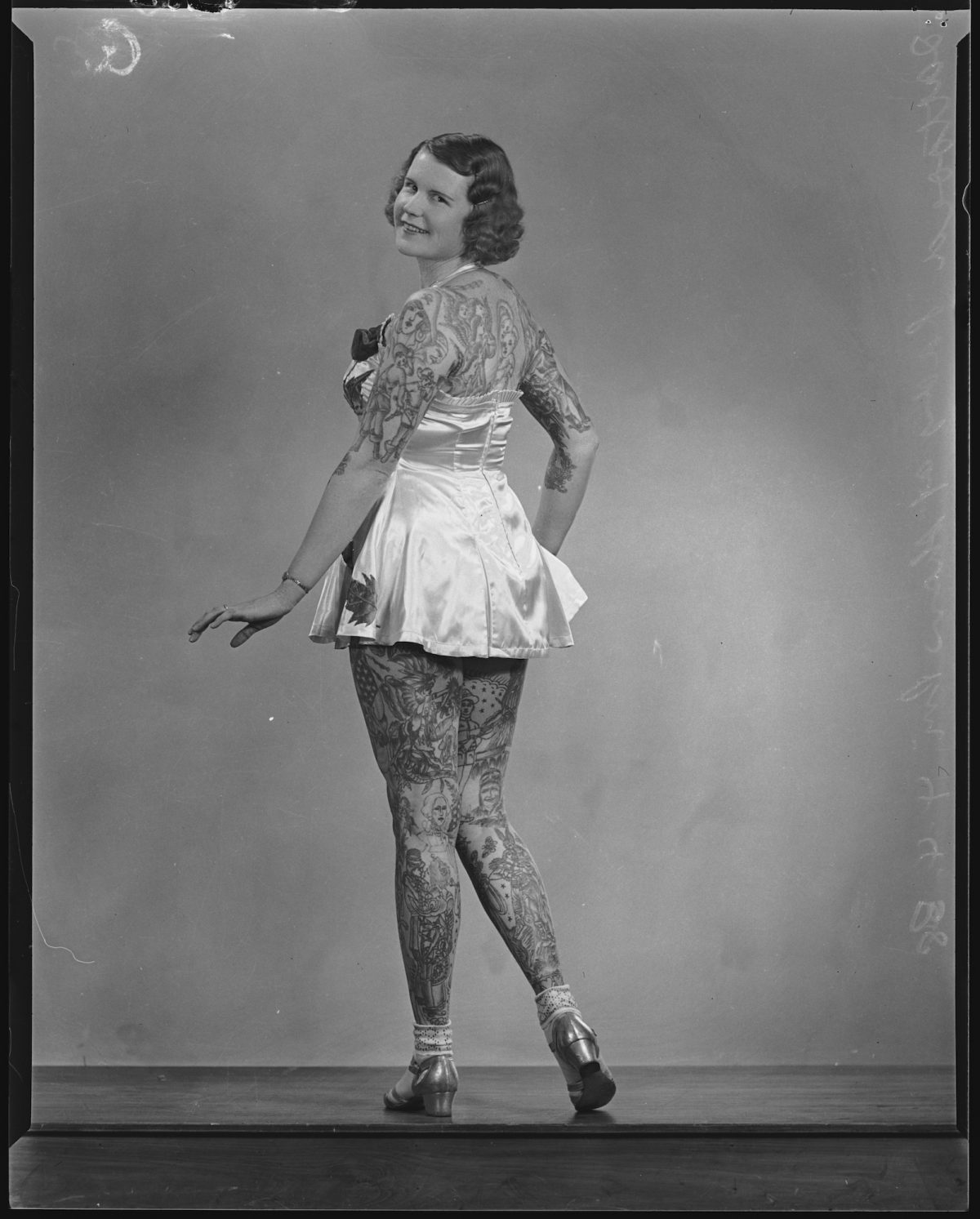
Betty Broadbent, the ‘Tattooed Venus’, Sydney, 4 April, 1938, photographer Ray Olsen

A butterfly tattoo, Australia, 25 December 1937, by ray Olsen

John Hennington of Woronora, Australia, 25 December 1937
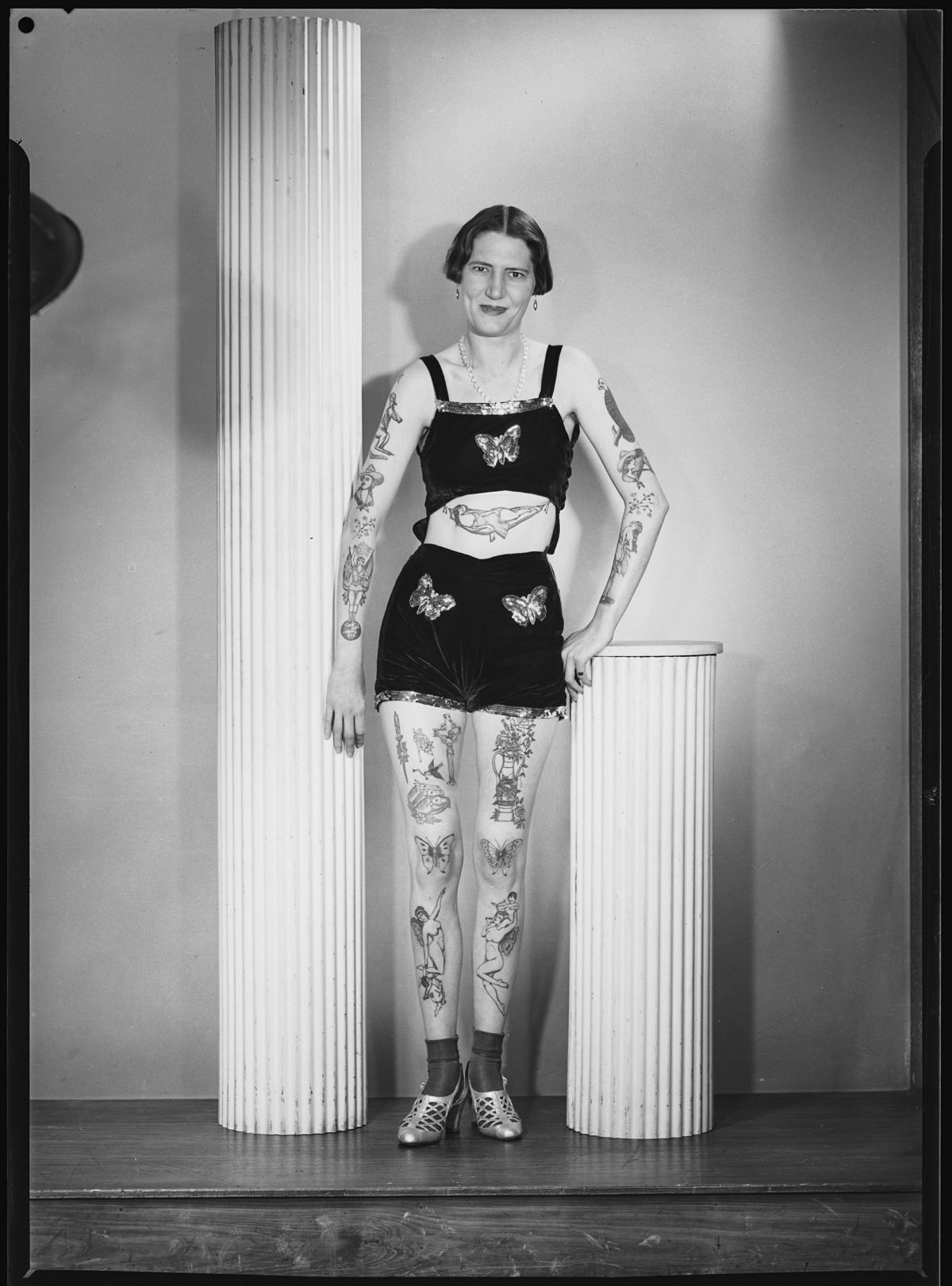
Tattooed woman, Australia, 25 December 1937, by unknown Pix Photographer
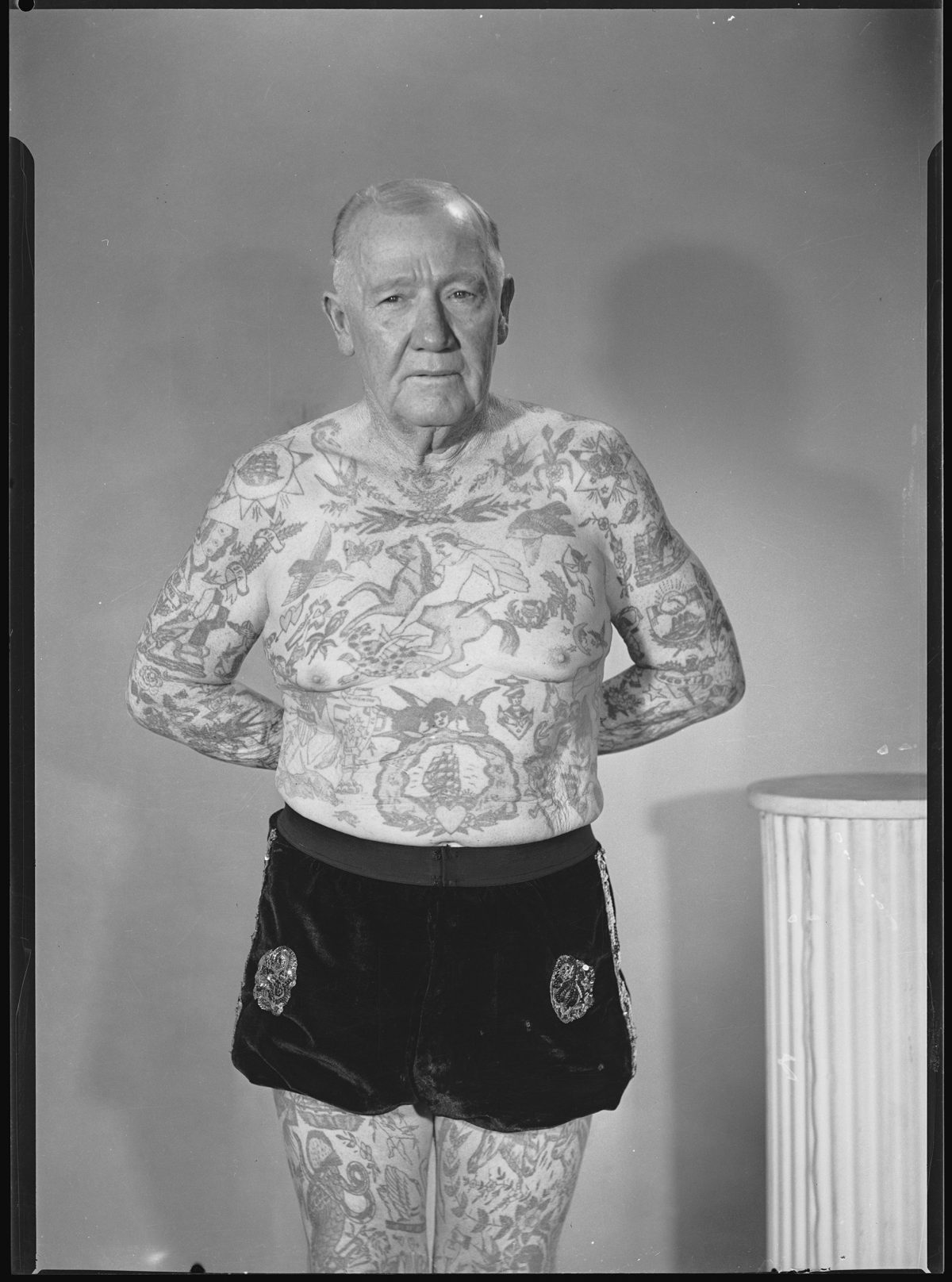
Tattooed man, Australia, 25 December 1937, by unknown Pix Photographer
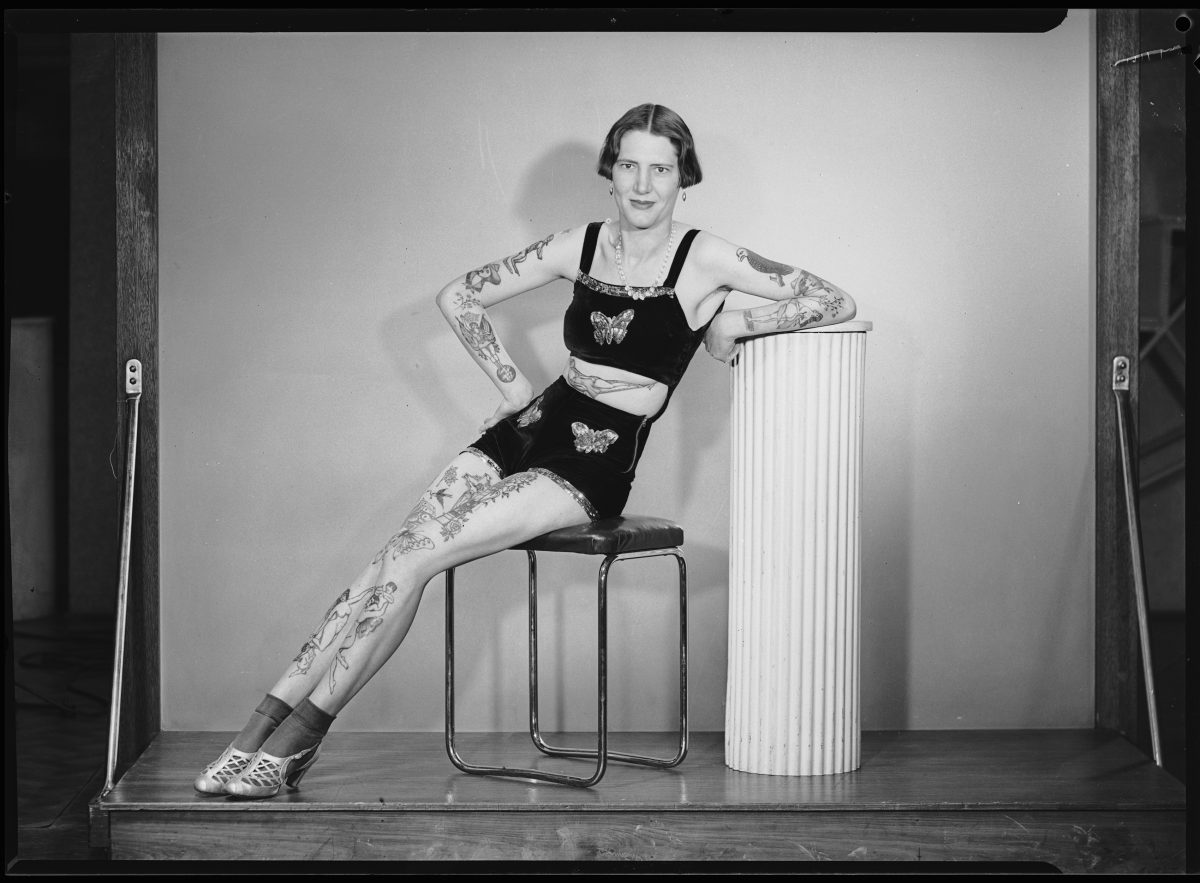
Tattooed woman, 25 December 1937
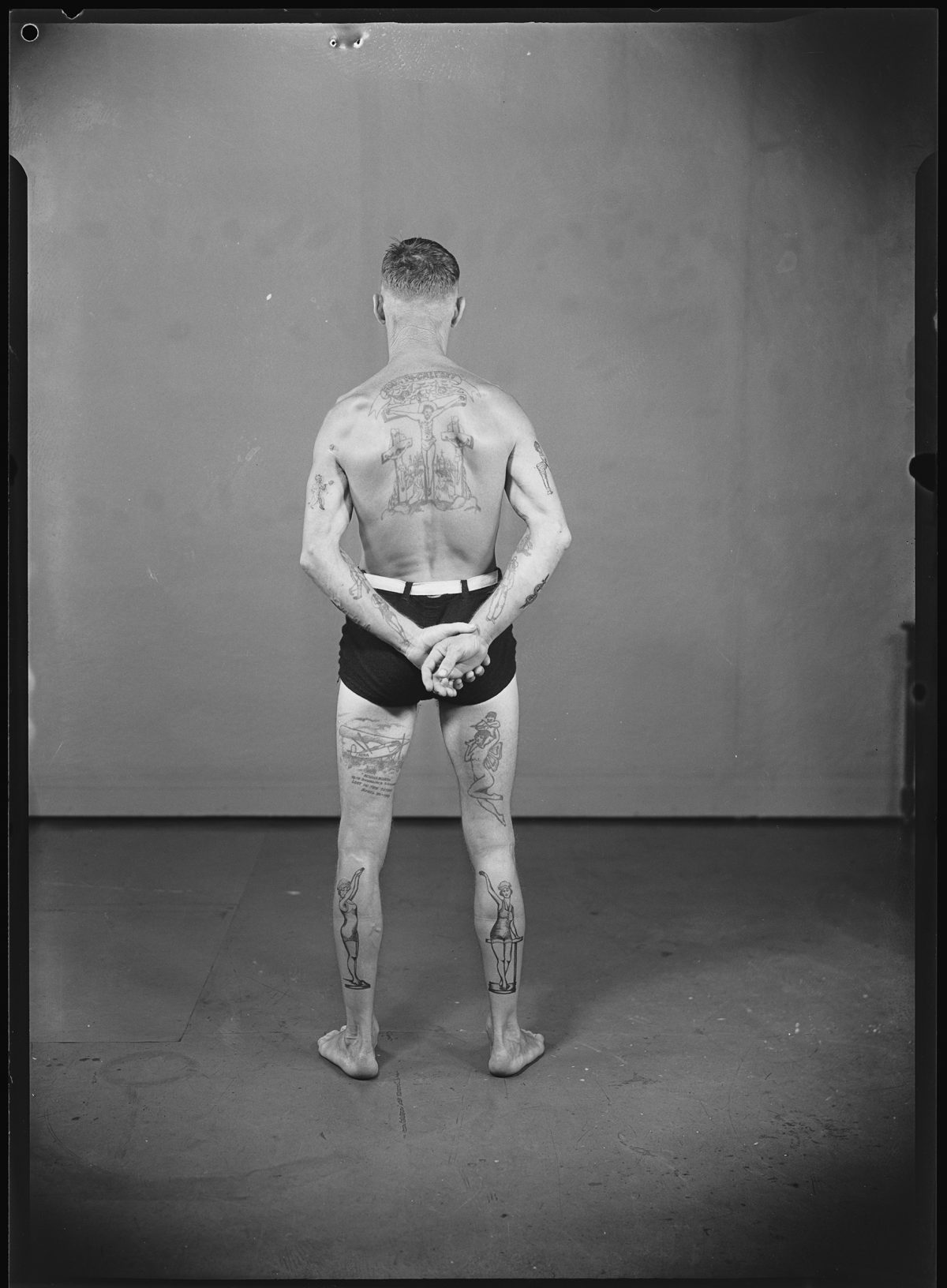
Tattooing, 25 December 1937, PIX Magazine, State LIbrary of New South Wales, ON 388/Box 033/Item 172, http://archival.sl.nsw.gov.au/Details/archive/110591400
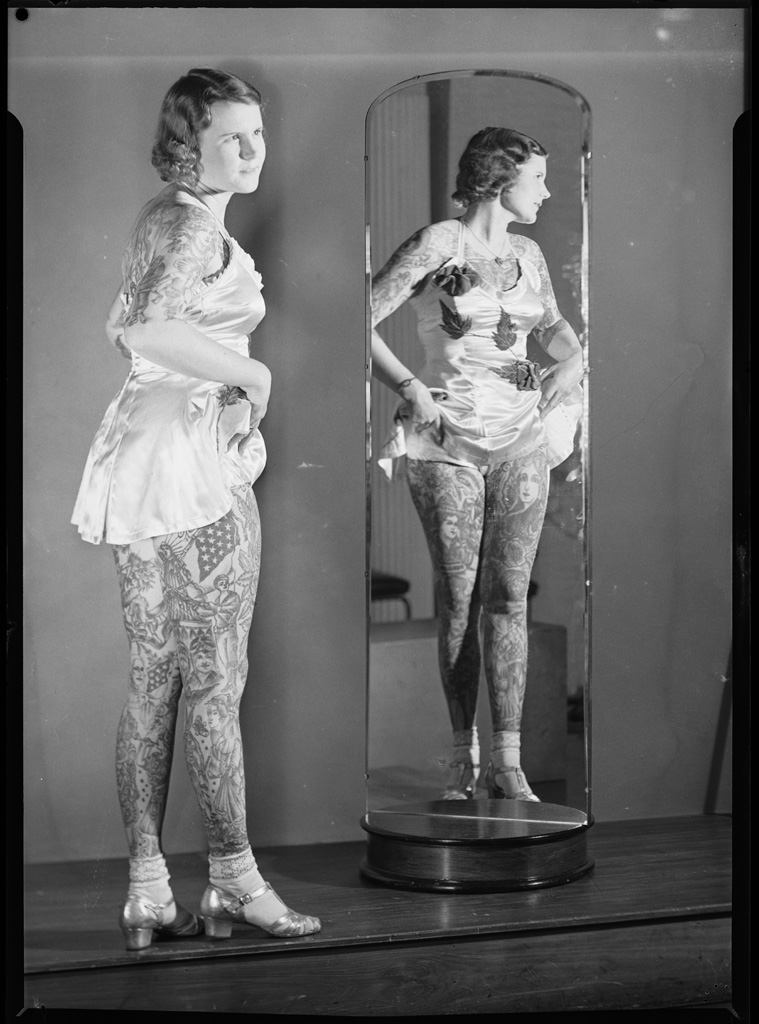
Betty Broadbent
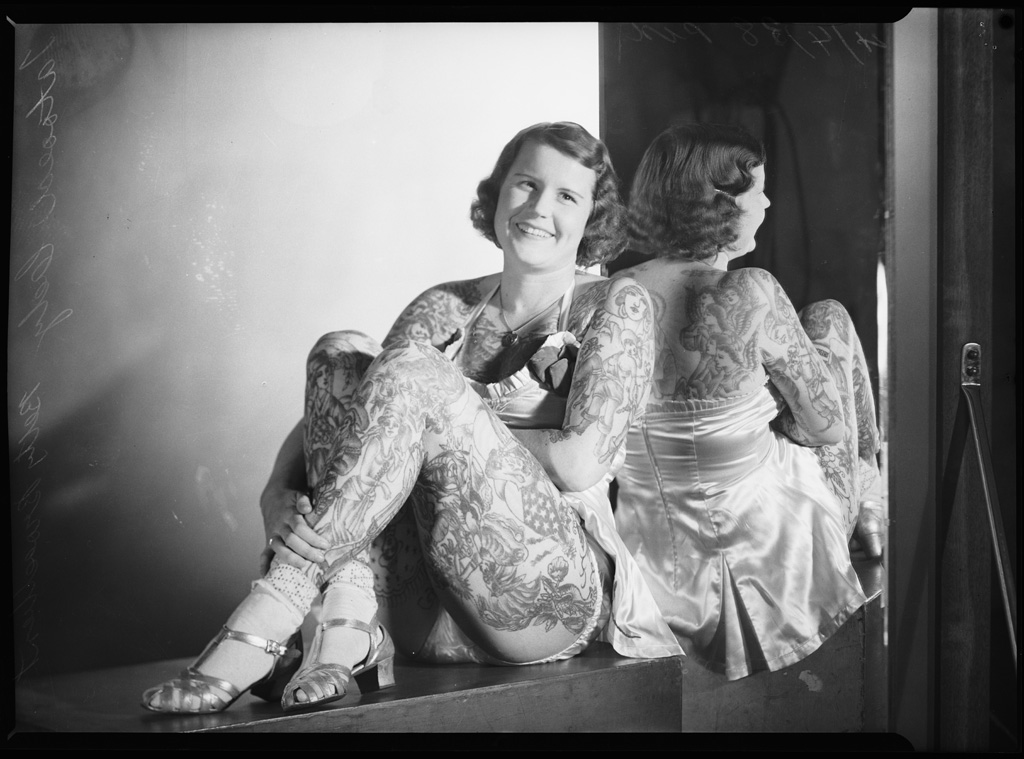
Betty Broadbent
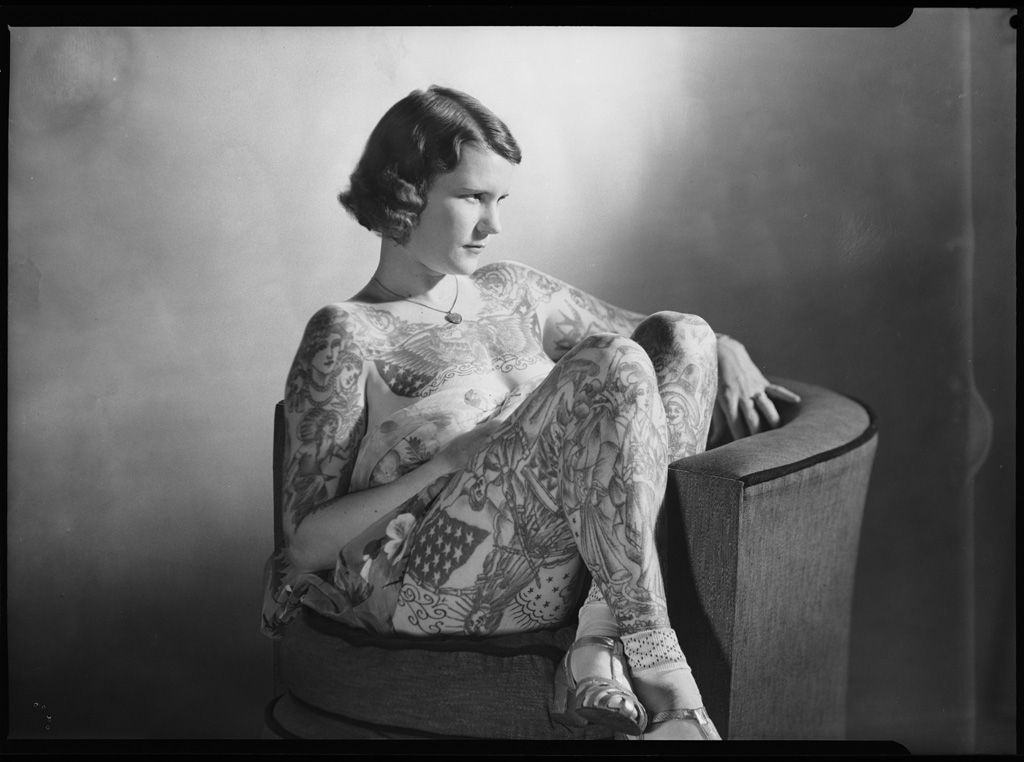
Tattooed lady Betty Broadbent, Pix, 4 April 1938
Would you like to support Flashbak?
Please consider making a donation to our site. We don't want to rely on ads to bring you the best of visual culture. You can also support us by signing up to our Mailing List. And you can also follow us on Facebook, Instagram and Twitter. For great art and culture delivered to your door, visit our shop.

